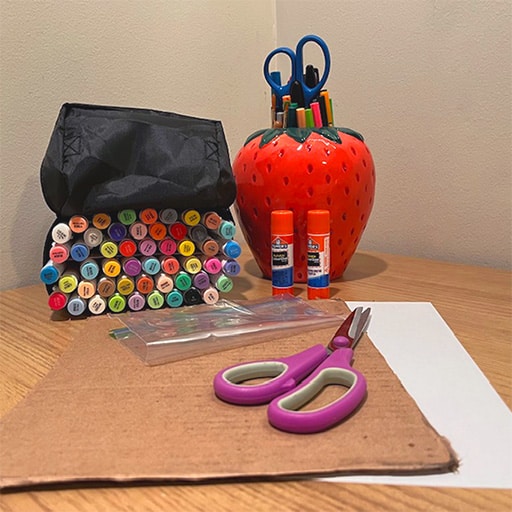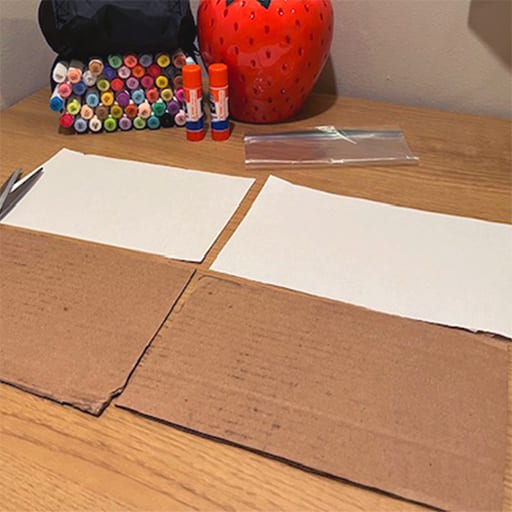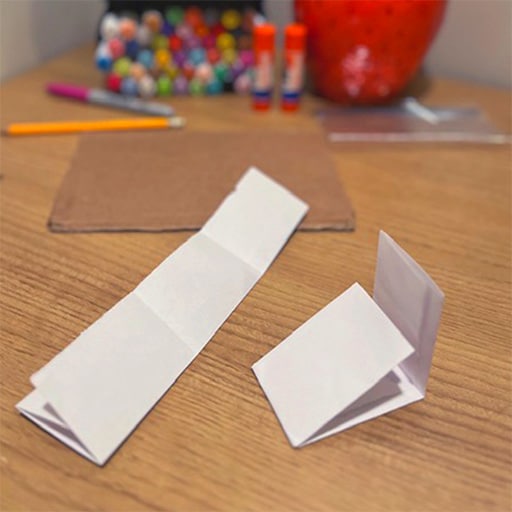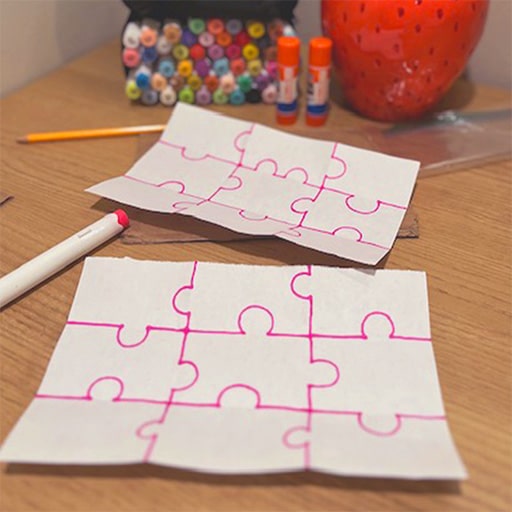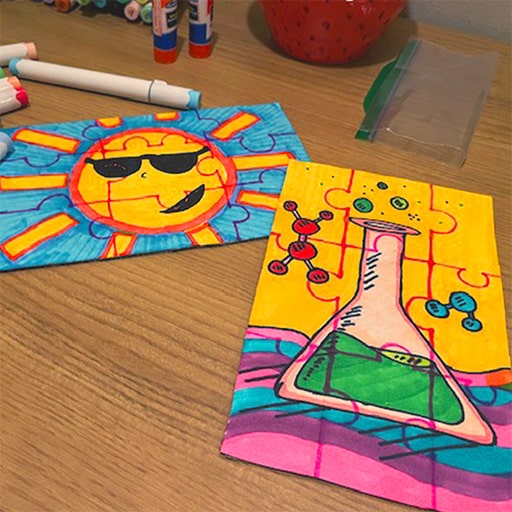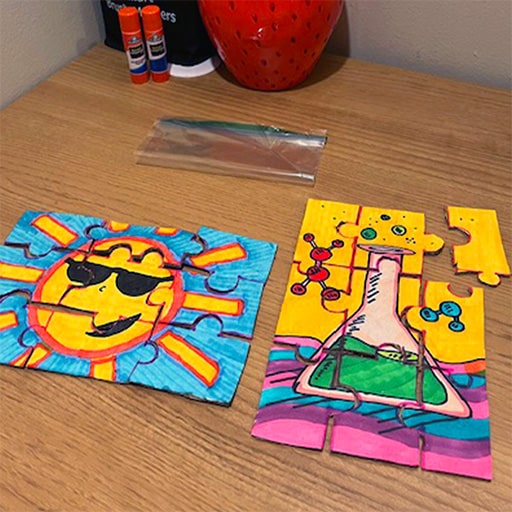Make Your Own Puzzle
Make Your Own Puzzle
Topic: What Makes a Problem Easier or Harder
Empowerment Video: Strategic Thinking
Basic Supplies:
- Cardboard such as empty cereal boxes or shipping packages
- Glue sticks
- Scissors
- Blank white paper
- Crayons, markers, or paint
- Zippered plastic bags or another method to contain the puzzle pieces
Video Discussion:
Ask, “What is easier, a jigsaw puzzle with 5 pieces or a jigsaw puzzle with 25 pieces?”
Call on one or more students to share their thinking and the reasoning behind it.
Ask, “What are some other ways we could make a jigsaw puzzle easier or harder?”
Direct students to turn and talk to a partner. Then ask for volunteers to share their ideas.
Note: Some possibilities for making a puzzle harder include having more pieces, using fewer colors or a more complex design, and cutting the pieces with straight edges or to look very similar.
Explain that jigsaw puzzles, like problems in life, can be easier or harder. Some problems are simply easier to solve or easier to handle and others are harder.
Ask, “What are some examples of easy problems? Hard problems?”
Call on students to provide a few examples of each and explain their thinking. Remind students that what can feel easy or hard to one person may feel quite different to another.
Explain that solving a jigsaw puzzle is one way to practice problem-solving, but there are lots of other ways to think about and solve problems, too.
After watching the video “Strategic Thinking”, ask your students the following questions:
- What are some ways that you could try to solve a problem?
- Is there a “best” way to problem solve? Why or why not?
- Why do you think it’s important to be able to think strategically?
- Do you think age impacts someone’s ability to solve a problem? For example, can a Kindergartener solve the same problems as a high school student? Why or why not?
Activity Instructions:
Students will be creating two puzzles. One puzzle will be aimed at a very young audience and one puzzle will be aimed at an audience their own age.
Stopping to consider the differences in problem-solving ability based on age forces students to think metacognitively about their own skills and how they have developed over time.
- You will be creating two jigsaw puzzles. One puzzle should be something you could give to a Preschool or Kindergarten student. The other puzzle should be something that you could give to a friend your age.
- Get two sheets of white paper and two pieces of cardboard.
- Using scissors, trim your white sheets of paper so that they will fit on the pieces of cardboard. One sheet of white paper should fit on each piece of cardboard.
- Use crayons, markers, or paint to create two jigsaw puzzle designs on the pieces of white paper. Try to paint or color right to the edge of your papers. Hint: Remember one design should be aimed at a younger student and one should be aimed at a friend your age. Be sure to think about making one puzzle easier (for the young student) and one harder (for a friend your age)!
- Using a glue stick, attach each design to the cardboard of the same size. Use plenty of glue and ensure that even the edges are firmly attached.
- Cut each puzzle into pieces.
- Practice solving each puzzle, then put the pieces in separate plastic bags for safekeeping.
- Consider giving your easier puzzle to a younger sibling or donating it to a Preschool or Kindergarten classroom at your school!
Note: As time allows, students can be asked to explain the decisions they made to target their audience when creating each puzzle. What made one puzzle easier than the other?
